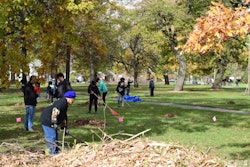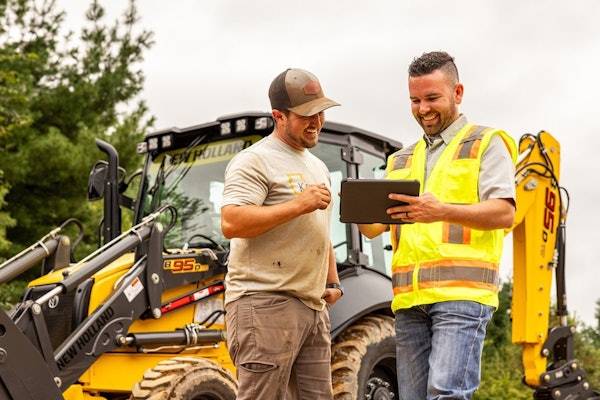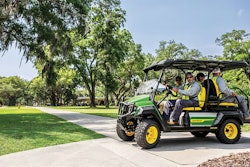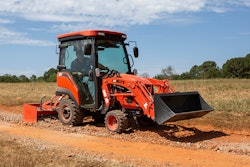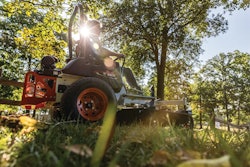
However, trust me when I say there are lots of ways in which landscaping can benefit from data analytics, and none of the ways I am about to describe are too complicated or time-consuming.
What is data analytics? Techopedia describes it as when data is “extracted and categorized to identify and analyze [behavior] and patterns.”
Let’s use an example. Say that you have a spreadsheet of the number of hours each of your employees worked in a year, with the individual dates that they worked them. If you were to study that spreadsheet and find out what months your employees worked the most in, that process would be called “data analytics.”
Without further ado, here are five ways that data analytics can help you maximize profitability and focus the efforts of new business and marketing for your landscaping business.
1. Identifying key characteristics of customers
Recording and analyzing basic data about your customers and keeping it in an easy-to-use database can help you sell more services and also find more customers like them. (By the way, a database can be a simple spreadsheet.)
Let’s say you made a list of your customer demographics such as marital status, number of dependents, household income, latitude/longitude of primary residence, secondary residences, square footage of homes, years homes have been owned, acreage of lots, etc.
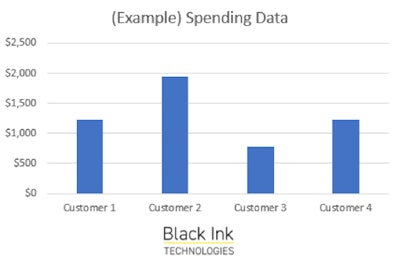 Photo: Black Ink Technologies
Photo: Black Ink TechnologiesThen, you add buyer behavior metrics, such as whether they ordered additional services like tree trimming, pesticide spraying, irrigation, stone work, etc. Even if your information is not complete, you will be better able to create customer and prospect profiles and thus anticipate what additional services are likely to be the most profitable with new customers over time.
Similarly, you’ll want to determine how you acquired these customers. Try to find out how your customers heard about your company, such as a referral from a neighbor, through a local dealer, direct mail, etc. and include that information on their profiles and in a macro-view to help inform you how you can most effectively allocate time/money/resources towards marketing your business in the future. We’ll talk about “target marketing” a little further down.
Identifying key characteristics of your existing customers through data analytics can help you sell more services to them, as well as find and identify new customers who will behave (a.k.a. spend) similarly to your existing customer base.
You can also use data analytics to identify key characteristics of your workforce. As I am sure you are aware, finding reliable and competent employees is extremely difficult these days, and it is just as important as finding new customers (perhaps even more so). Having a sense of how you found your good employees will help you recruit more like them, and data analytics can give you that.
2. Improving ROI on marketing
Sales and marketing probably aren’t your landscaping company’s largest expenses but are certainly areas to maximize any dollars spent if it means yielding better results. Marketing analytics can empower you to reach the same number of prospective clients through marketing efforts while spending less money than you usually would, and here’s how.
Remember what we talked about in the first bullet? Using the key characteristics that you gather from your existing customers will enable you to create a customer profile, which allows you to target your advertising better to “look-alike prospects.”
Say nine out of every ten of your clients found out about your service through neighborhood referrals. This would be a clear indication that having referral incentives for your current clients (offering discounts, credits on future service or even rebates for recommending you) is where you should focus most of your marketing efforts.
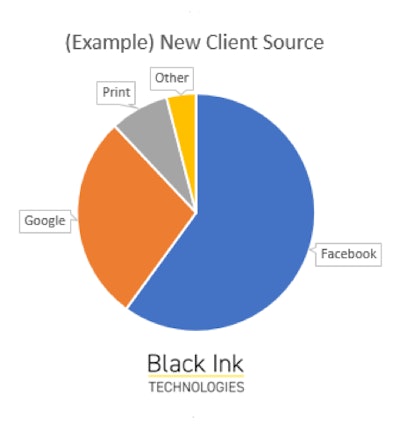 Photo: Black Ink Technologies
Photo: Black Ink TechnologiesSome landscapers today are offering between $50-$100 credit or incentives to their existing customers to provide a neighbor’s contact information.
Knowing what forms of marketing have worked in the past for your company can help you make better financial decisions in the future, and only through data analytics can you gain that information.
Taking things one step further, you can use data analytics to test hypotheses. Doing this is called A/B testing. The basic underlying principle goes: your company takes out two ads, one in newspaper A and one in newspaper B, and lets them run for a certain amount of time. Each one has a different email address listed to delineate between inquiries from each of the ads.
Then, after the time period or “fight” is up, you crunch the numbers from each address to see which print advertisement led to your company receiving more leads/inquiries. If the ad in newspaper A performed better than the one in newspaper B, you then know that your dollar is worth more when you spend it with newspaper A.
Think of advertising as a dartboard, and data analytics is an advantage in hitting the bullseye – maybe it’s that pair of glasses you never wear but helps you see the target or a foot-long advantage. The more you crunch the numbers, the more bullseyes you’ll make.
3. Incentivizing your employees
If there’s one thing that employees complain about, it’s their bosses treating them fairly. If you told your crew that you were going to start looking at data in order to compensate them on a more facts-based basis, odds are that they would approve.
Handing out vacation days and sick days without any bias is crucial to keeping your crew happy and heathy, and data analytics can help you get that right too. If you know who took time off most recently and who has not missed a day in weeks, then you can more accurately make an informed decision when you are forced to call someone to cover a shift.
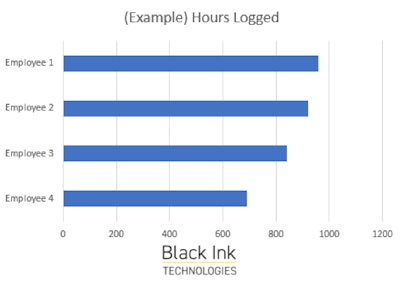 Photo: Black Ink Technologies
Photo: Black Ink TechnologiesOn another note, if you have to tell someone that they can’t take time off during a specific week, the conversation might happen more smoothly if you had a forecast showing quantitative reasons why you will need their manpower.
Whenever a customer calls or emails you to share a positive review of your crew’s hard work, you should keep a record of who in your crew was on the job. That way, when it comes to giving bonuses and time off, you will have cold hard facts to help justify your decision.
Basing management decisions on data such as this will indicate to your crew that you want to treat them as fairly as possible, and furthermore, having clearly defined benchmarks will make it easier for them to know how their performance will be judged.
In addition to basing decisions on your employees’ hours, you can also use data analytics to make informed decisions based on their physical performance. There’s lots of moving around that goes into landscaping, and there are many products that you can use to track statistics such as footsteps, heart rate and so on. It doesn’t just have to be about who’s slacking off – you can make weekly challenges and leaderboards that will “gamify” ordinary work processes and reward folks who are taking their job seriously.
Using data analytics to guide your decision-making process when it comes to compensating your landscaping crew is a sensible way to improve morale and can also be a fun cultural addition to your company.
4. Optimizing routes
Ever heard of the Traveling Salesman Problem? It’s a famous mathematical question having to do with optimization. From Wired, it goes: “given a collection of cities connected by highways, what is the shortest route that visits every city and returns to the starting place?”
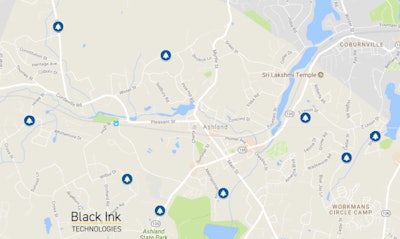 Photo: Black Ink Technologies
Photo: Black Ink TechnologiesImagine this question having to do with your landscaping business. Today, there are a plethora of options for software products designed to shorten the distance your crews drive between work sites, which will save on gas and reduce the chance that your team will be late. You just simply enter the addresses you need to visit on a given day and the software handles the rest – giving you a detailed map of where your drivers should go and in what order.
Having a pre-planned route will help improve ordinary day-to-day operations, but what if you want to enable your company to respond to unexpected calls? Data analytics can help with that, too. Installing GPS transponders into your trucks would enable you to look at a map that tells you exactly where your crew or crews are at any given moment, and then you will be able to send the closest one to the place that needs emergency work.
Having a handle on your routes won’t just make your customers and your bank account happy, it will also please your employees, since a better planned route means that they will have a more predictable day. In addition, having GPS in your trucks will help you put a stop to employees wasting time or moonlighting.
Knowing the best way for your crews to go will make sure that your clients get their landscaping on time, and having a way to monitor the location of your trucks is a valuable asset for oversight and fast-response purposes.
5. Maximizing your equipment lifespan
Data analytics can also help you make sure that your company spends less money on fixing and replacing equipment, by minimizing the uncertainty that your equipment can handle the wear and tear you put it through and ensuring that you’re servicing your equipment at the correct frequency.
By labeling your machines and your trucks, you can easily keep track at the serial unit level of which ones are due for service checks, which ones are the oldest and which units are getting the most use.
With usage statistics like the number of jobs it’s been on, the number of times the oil has been changed, and the amount of oil additives it’s been given, you can track when a piece of outdoor power equipment should be serviced next or perform A/B tests like mentioned before to see which brands give you and your guys the best bang for your buck.
Additionally, you can couple that data with your employee work data to see which operators were using specific pieces of equipment. This can be useful information when you are investigating what caused a piece of equipment to break, or why a machine appears to have less wear than expected.
Reminder apps can help you remember to service your equipment according to a schedule. They can set up “ticklers,” or automated notifications sent to your phone or email, that notify you on the date that you should check the oil on something, replace the blade on something or etc.
Keeping you and your employees apprised of the status of your equipment through the use of data analytics can remove unnecessary costs on equipment repair and replacements from your ledger.
EDITOR’S NOTE: This article was written by Jeff Winsper. Winsper is the president of Black Ink Technologies, which helps the premier manufacturing industry sell more, faster and smarter. Black Ink combined the best of CRM, business intelligence, geo-mapping, data management, industry-specific data and a pre-built library of statistical models in one easy to use, affordable platform. Connect with Winsper @jeffwinsper, [email protected] and on LinkedIn.



